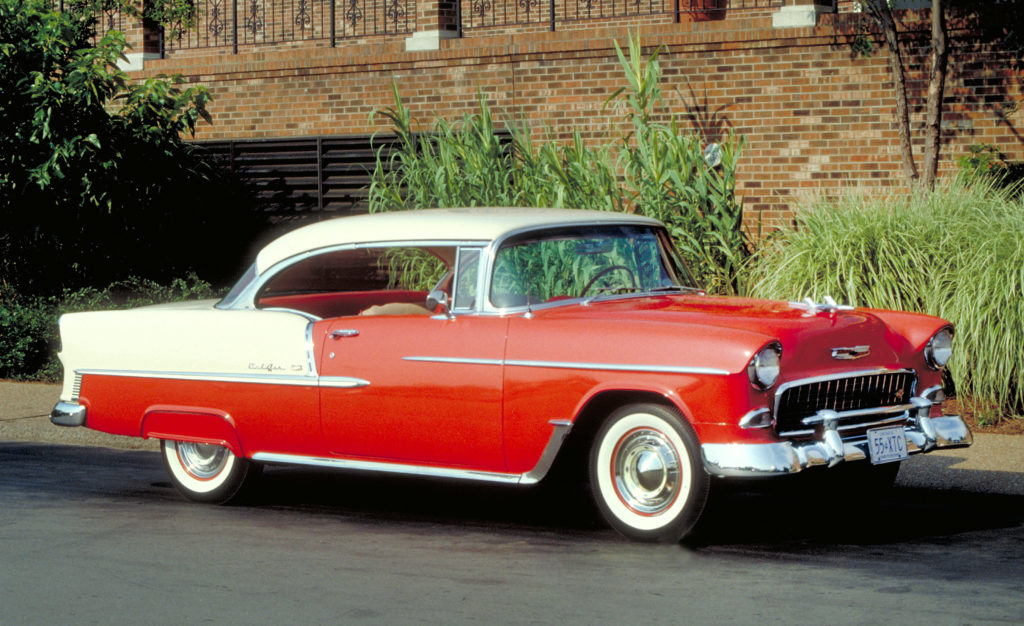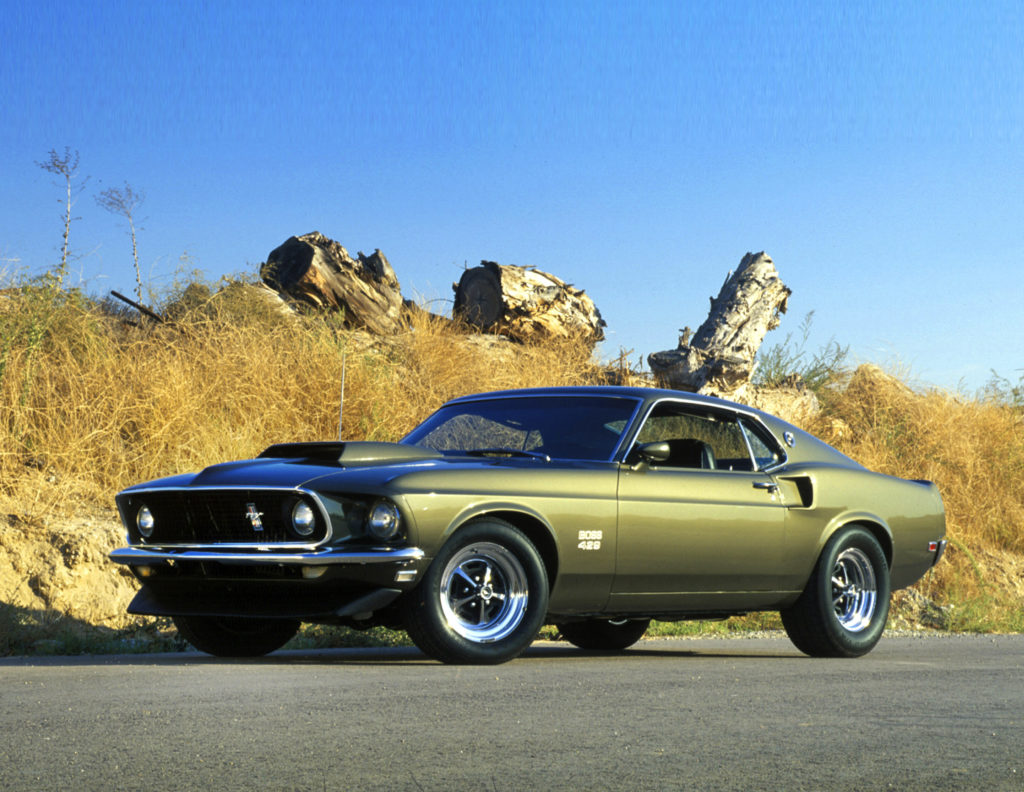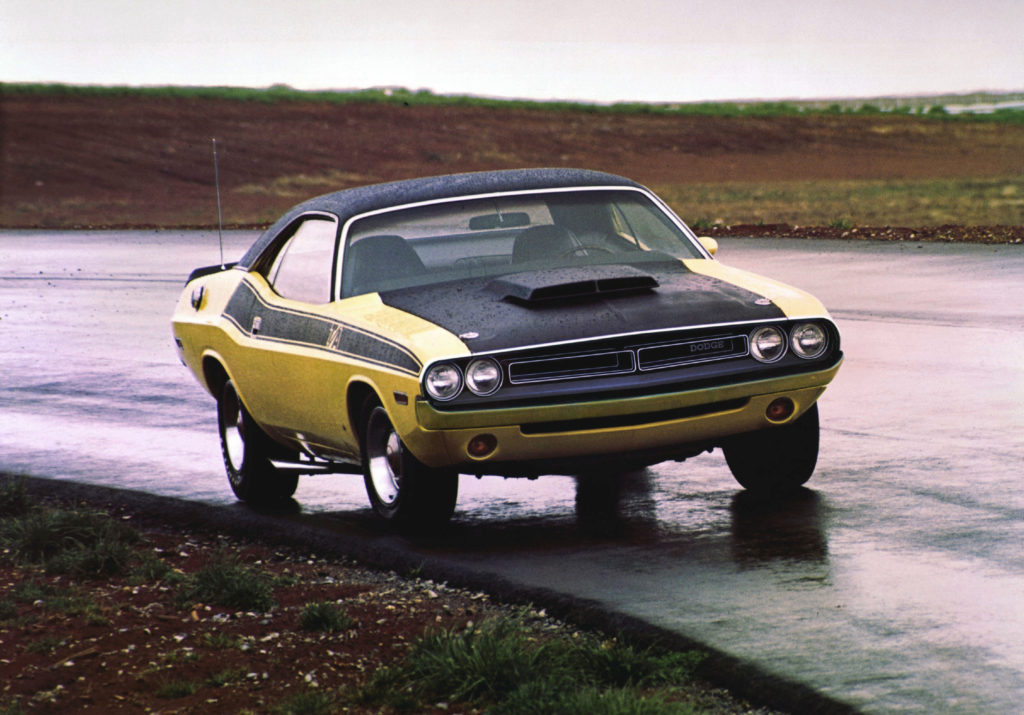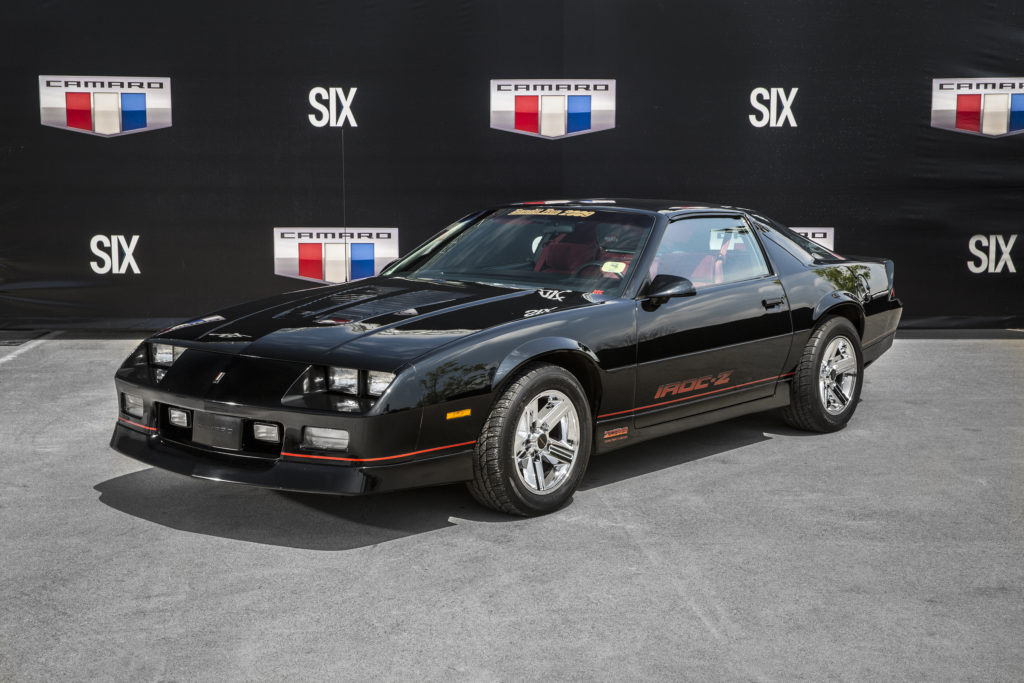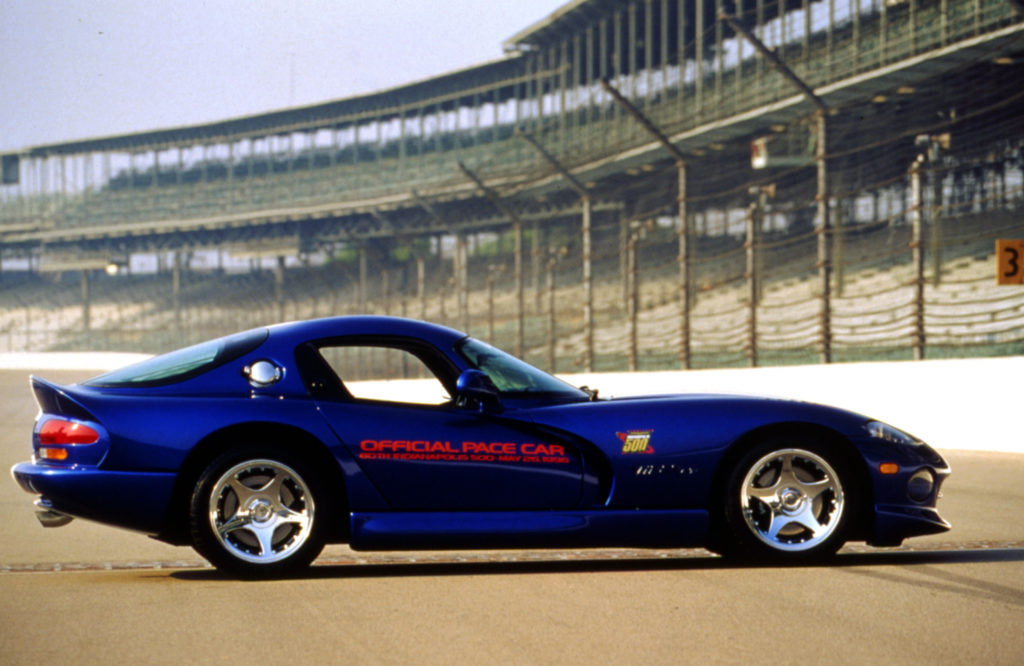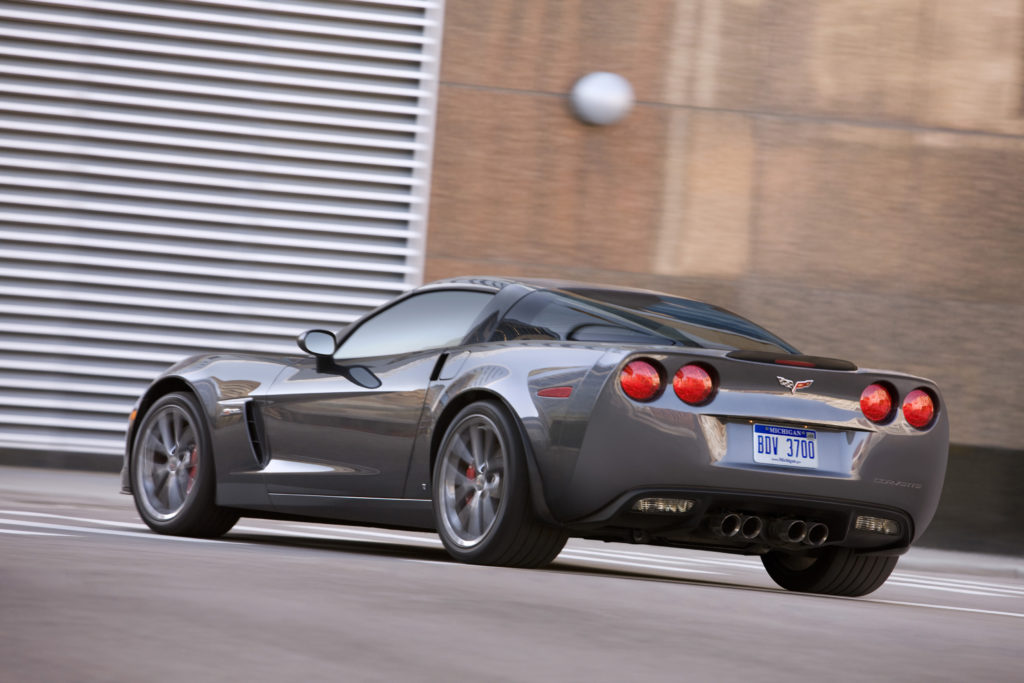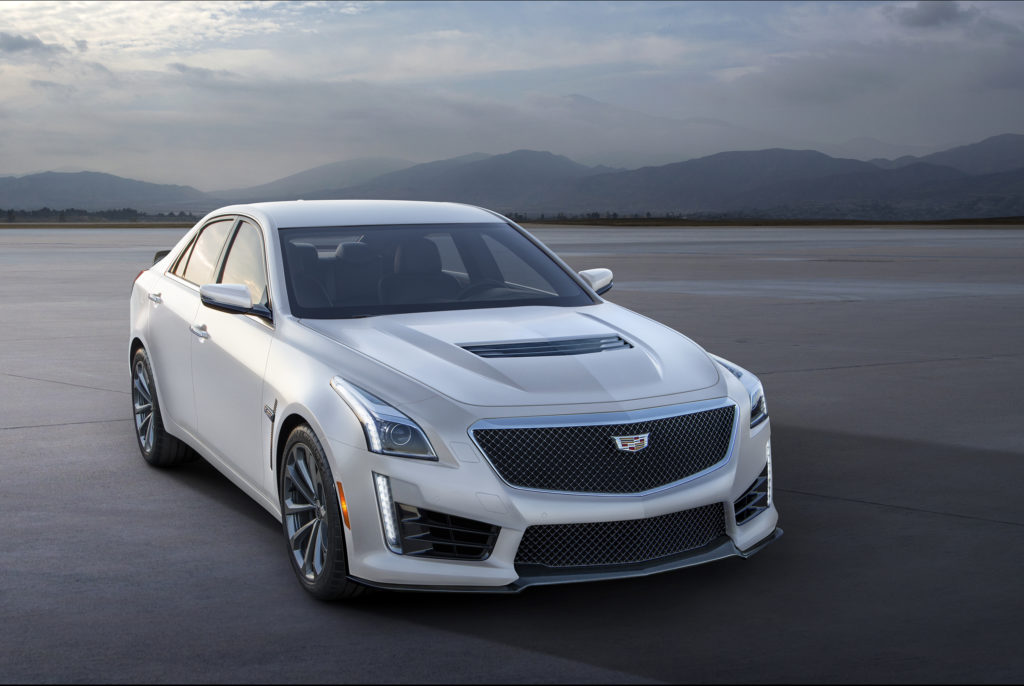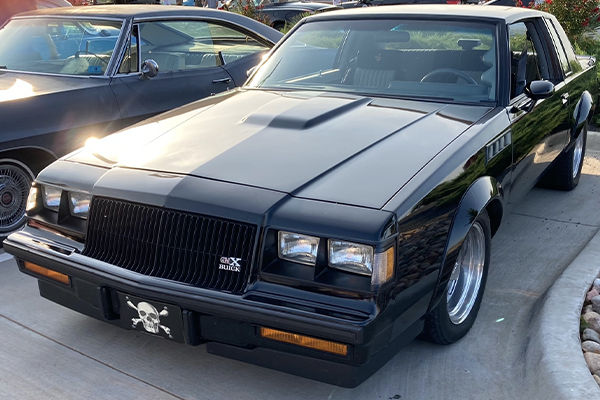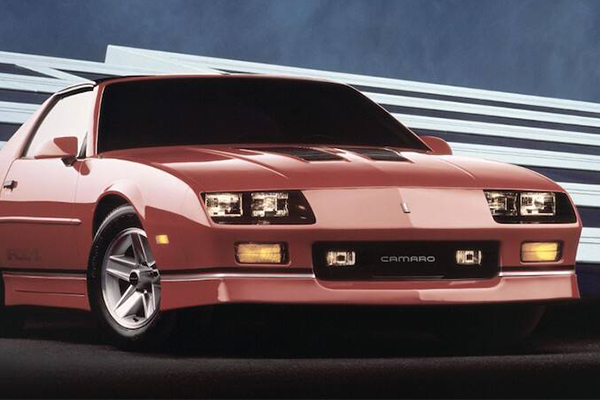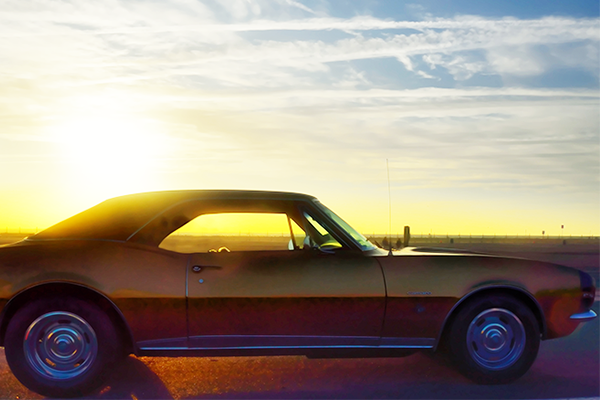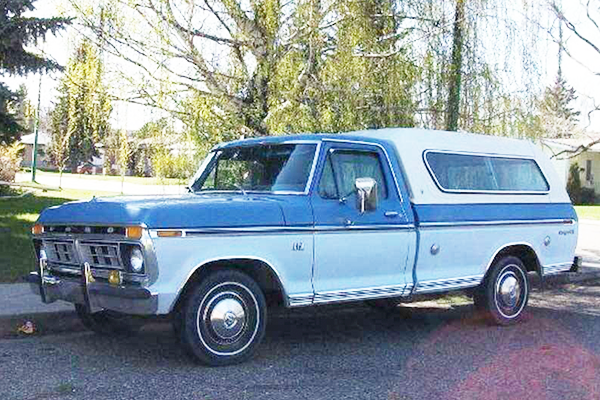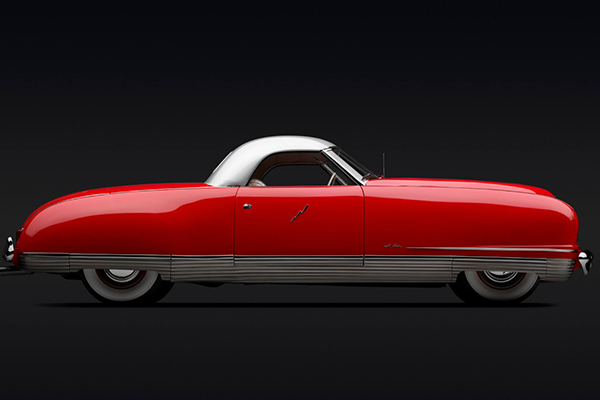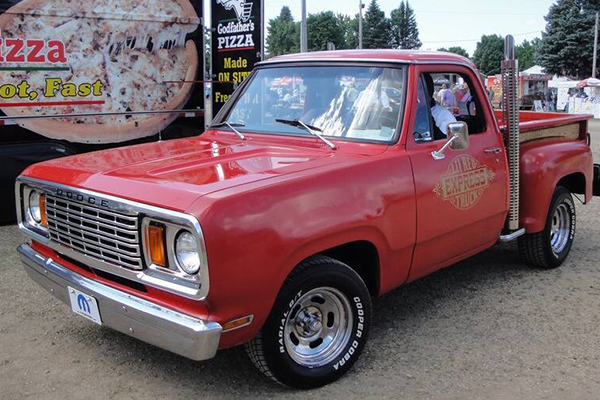The fireworks may be shooting off this weekend in celebration of our nation's birthday, but it always sounds like the 4th of July to us when we hear the rumble and exhaust of a 650 hp V8 engine. What better way to honor the holiday than to pay homage to the beasts on four wheels that have come out of Michigan, Kentucky, and Ohio over the years.
American muscle cars have evolved throughout the decades as technology improved and styling cues shifted, but they have always stayed true to their powerhouse DNA. The result is a legacy of over 60 years that has made for one heck of a ride. Read on to find out which muscle cars we picked as our favorites from each decade.
The "first" muscle cars: 1940s
 1949 Oldsmobile Rocket 88 | Photo via Barrett-Jackson
1949 Oldsmobile Rocket 88 | Photo via Barrett-Jackson
After the first American-made car appeared in 1893, plenty of other high-revving vehicles began popping up on our roads (think early race cars and gangster getaway cars). But it wasn't until Oldsmobile's 1949 Rocket 88 that the first true American muscle car arrived. Designed with a revolutionary overhead valve concept V8 engine, the Rocket 88 output 135 hp and 283 lb·ft torque on a light and nimble chassis, boasting more power and better fuel economy than its peers.
The Rocket dominated NASCAR that year and into the early '50s, taking on the moniker, "King of NASCAR," and paving the way for all muscle cars to come.
The "fabulous" muscle cars: 1950s
The muscle cars of the fabulous '50s were all about pastel colors, whitewall tires, front bench seats, and convertible roof options. But make no mistake, these pioneer muscle cars had plenty of power under their long hoods. Thanks to a post-war boom in automotive sales, car manufacturers began loading up the hp and stretching cars' limits. The most notable muscle car of this decade was the 1955 Chevy Classic V8.
The '55 Chevy's success came from its small-block 265 cu V8 engine, which was so reliable that it would become the foundation of Chevrolet's muscle cars for the decades to come. Able to hit 195 hp, the '55 Chevy found a place in the garages of millions of auto enthusiasts, accounting for nearly 23% of all car sales that year. This was the car that turned us onto muscle cars. And we've never looked back.
Able to hit 195 hp, the '55 Chevy found a place in the garages of millions of auto enthusiasts, accounting for nearly 23% of all car sales that year. Runners-Up:
- 1956 Mercury Montclair
The Montclair featured a 260 hp V8 engine that put out plenty of power and had the 1950s classic look.
- 1958 Packard Hawk
Long wing panels, a hood scoop, and a supercharged 275 hp engine makes this Hawk a true '50s muscle car. - 1959 Chrysler 300E
Maybe ahead of its time, the 300E fell flat on sales, but has now become a rare gem among collectors. The 300E could belt out 380 hp—incredible for its time!
The pony cars: 1960s
The Ford Mustang hit the market in 1964, ushering in the era of pony cars—powerful compact cars—and creating a wave of competition that unleashed many of the muscle cars that we've come to love. It was the golden age for auto enthusiasts.
The Mustang looked fiercest with fastback, rear-end styling, made famous in 1968's action film, Bullit. The "Boss 9" Mustang takes home the prize as our favorite Mustang with its hood scoop and 429 cu, 375 hp V8 engine. Ford has played around with different Mustang bodies and styles throughout the years, but a recurring theme is that they always wind up going back to this generation of Mustangs for inspiration. A true testament to the original pony car.
Runners-Up:
- 1968 Dodge Charger R/T
A true muscle car if there ever was one. The second-generation Charger was introduced for 1968 and ran through 1970, and gained fame via the TV show, The Dukes of Hazzard (1969 Charger) and the first Fast and Furious movie (1970 Charger).
- 1969 Plymouth Road Runner 426 Hemi
The working man or woman's muscle car. It didn't have the flashy looks or steep price tag, but its engine was pure Hemi power.
- 1969 Chevy Nova SS
Quick and balanced. The Nova was ahead of its time in weight distribution during a period when muscle cars were getting longer and heavier. The Nova proved bigger isn't always better.
End of the Golden Age: 1970s
At the turn of the decade, muscle cars weren't just becoming more powerful, they were downright menacing on the streets. Dodge launched the Challenger in 1970, a late addition to the party, but it epitomized the golden era of muscle cars with its balance of a big, bold design and high-performing engine and suspension. The 1970s Dodge Challenger R/T came to fame as the getaway car in 1971 film, Vanishing Point. However, its 440 c.i. V8 engine, which unleashed 375 hp (considered a conservative rating), was the real show stealer.
Things were getting good when the global oil crisis and stricter emission laws forced car manufacturers to abruptly abandon large gas-hungry engines and turn their focus on developing more economical cars. The Challenger's production halted in 1974, along with many other muscle cars of the golden era.
Runners-Up:
- 1970 Chevrolet LS6 Chevelle
At 450 hp and 500 lb·ft torque, it was the king of the streets. It's cousin, the Camaro, went on to achieve greater success, but the Chevelle will always be a legend in its own right.
- 1970 Plymouth Hemi Barracuda
The first Barracuda came to market two weeks before the Mustang—it just could never surpass its junior competitor in sales and was stopped in 1974, never to return. This lost muscle car is still talked about by auto enthusiasts to this day.
- 1971 AMC Javelin AMX
The Javelin AMX didn't have the biggest engine block, but it could hold its own thanks to its race-inspired design (its racing model won the 1971 and 1972 Trans Am Series championships). It was also the first pony car to be used by law enforcement agencies for highway patrol.
Dodge launched the Challenger in 1970, a late addition to the party, but it epitomized the golden era of muscle cars with its balance of a big, bold design and high-performing engine and suspension.
Diamonds in the rough: 1980s
The '80s were not kind to domestic car manufacturers. Detroit's technology hadn't caught up fast enough to deal with the new emission and safety laws, allowing European and Asian manufacturers to outperform most American cars in the market. Thankfully there were a few diamonds in the rough: muscle cars engineered by teams who adapted to the times, allowing US cars to go neck and neck with the sporty BMWs and Nissans that were hitting the streets.
The 1985 Camaro IROC-Z was one of these cars. With stunningly sleek good looks, race-tuned handling and suspension, and a five-liter tuned port injection V8 engine rated at 215 hp, the Camaro proved that American muscle cars were able to incorporate new technology and market demands while still retaining their historic roots.
Runners-Up:
- 1982 Pontiac Firebird Trans Am
Redesigned for 1982, the Firebird Trans Am became an icon of the “sexy” ’80s culture with its low, sleek lines, pop-up headlights and blacked-out taillights. It also starred as KITT in Knight Rider.
- 1987 Buick Regal GNX
What was lost in the early '70s was found in the late '80s with the Regal GNX. Brute power that could beat Porches and Ferraris on the strip. Its boxy looks on the other hand, couldn't quite match up.
- 1983 Chevrolet Monte Carlo SS
This street-legal version of NASCAR’s famed model was a success among racing fans. Its aero-influenced styling tweaks and "High Output" (for the time), 305 c.i. 180-hp V8, made it feel like it was always race day.
Back to muscle: 1990s
American muscle cars regained some pep to their step in the '90s, going back to the '60s playbook in style and power but with the added bonus of engineering advancements. The Dodge Viper debuted in 1992 and instantly became the muscle car. Featuring an aluminum 8L V10 engine that output 400 hp and 465 lb·ft torque, this lightweight roadster could withstand 1 lateral g-force on turns.
The Viper's most endearing factor, however, was its simplicity. There was no traction control or anti-lock brakes—the early models didn't even feature airbags or air conditioning. The driver was connected with the car, without any electronics or modern aids to interfere, and it made for a pureness that only early muscle cars could match. Novice drivers were often bit by the Viper on high speeds, but those who could charm the snake were in for an exhilarating ride.
Dodge released the second generation Viper in 1996, offering a GTS Coupe model with a "double bubble" roof that made the car famous. This Viper had 50 more horsepower and a few concessions including airbags, air conditioning, and even power windows.
There was no traction control or anti-lock brakes—the early models didn't even feature airbags or air conditioning.
Runners-Up:
- 1992 Ford Crown Victoria Police Interceptor
This was the car that got our hearts racing, and not always in the good way. With a 4.6L V8 engine that output 210 hp, this rear-wheel drive sedan could catch speeding cars faster than you could say, "Miranda Rights."
- 1991 Chevrolet Camaro 5.7 V8 Z28
While import cars were still lapping most domestics, the Camaro held true in the '90s and reminded the world that American muscle cars could go with the best of them. This '91 model rewards the Camaro with a second listing.
- 1996 Ford Mustang Cobra
Sporting a 32-valve, DOHC V8 making 305 horsepower, the 1996 Cobra signaled a new sophistication and performance level for Ford's iconic pony car.
Millennial refinement: 2000s
Like we could forget the Vette. Launched in 1953 from Bowling Green, Kentucky, the Chevrolet Corvette has been a legendary American muscle car throughout the decades. From its sleek and sophisticated Stingray styling to its powerful and balanced V8 engine, the Vette is the definition of the cool muscle car. In 2009, it somehow became even better with the release of the ZR1.
The ZR1 was given a supercharged 6.2L V8 engine that output 638 hp and 604 lb·ft torque—the most powerful engine ever put into a sports car by GM at the time. With a top speed of 205 mph, 0-60 mph in 3.4 seconds, and 0-100 mph in 7.6 seconds, the ZR1 could chop contemporary Porsche 911 Turbo and Ferrari F430 imports on any given day. Our favorite feature on this Vette was the clear carbon-fiber hood panel that gave onlookers a glimpse of the beastly engine inside.
The 2000s refined American muscle cars, adding a layer of technological sophistication. The end products were things of beauty.
Runners-Up:
- 2007 Dodge Charger SRT-8 Super Bee
Dodge rediscovered its muscle roots in the 2000s, bringing back famed muscle cars such as the Charger and Super Bee. Built as a Charger but modified as a limited-edition Super Bee version, this blast from the past output 425 hp from its V8 Hemi engine.
- 2005 Ford GT
What started as a concept car based off Ford's 1960s GT40 race cars, became a reality in 2005. This mid-engine, retro-inspired supercar put out blazing fast speeds.
- 2002 Pontiac Firebird Trans Am WS-6
Making our list a second time, the Firebird Trans Am was at the peak of its powers by this time, its last year of production. Able to hit 60 mph in about 5 seconds flat and run the quarter-mile in the mid-13s, this bird could certainly fly.
Modern technology meets raw power: 2010s
Like the 2000s, this current generation of muscle cars has benefited from evolving automotive technology. Instead of fighting a losing battle against emission standards circa the '70s and '80s, engineers now battle against each other on making the most powerful yet efficient engine. This age of technology has produced supercars that have broken every track record on the books.
And so, for this decade's American muscle car, we've chosen a brand that used to be associated with quiet sophistication rather than high-octane performance. The 2016 Cadillac CTS-V may come from the makers of the DeVille, the steady sedan for well-to-do professionals for generations, but the 640 hp engine under the CTS-V's hood is anything but retirement-age friendly. The CTS models have become progressively faster each year since introduced in 2002—as if the engineers were trying to sneak the horsepower numbers by the bosses—until finally, the 2009–2016 CTS-V generation appeared, muscles flexing.
The '16 CTS-V sprints to 60 mph in 3.7 seconds and reaches a top speed of 200 mph. The Eaton-supercharged 6.2L V8 engine outputs 630 lb·ft torque on top of the 640 hp. Built with track days in mind, Brembo brakes, race-tuned suspension, carbon fiber hood and panels, and a quad exhaust make the CTS-V a force to be reckoned with. It may not have the spartan and reckless qualities of earlier muscle cars, but the numbers don't lie. This is a muscle car that will roar down the highway, it just so happens to come in a luxurious package.
Not since the '60s and '70s have we seen so many rumbling, high-throttle cars in a single decade. Best of all, many of them are faster versions of models from our favorite bygone era. We can't wait to see what the 2020s will bring.
Built with track days in mind, Brembo brakes, race-tuned suspension, carbon fiber hood and panels, and a quad exhaust make the CTS-V a force to be reckoned with.
Runners-Up:
- 2016 Dodge Challenger SRT Hellcat
707 horsepower. Need we say more? This monster has the most horsepower available on a production car to date thanks to its 6.2L V8 Hemi engine. The Challenger SRT Hellcat looks, sounds, and drives mean.
- 2015 EQUUS BASS770
If you took the best qualities from each of the '60s pony cars and built them into one car, you'd get the EQUUS BASS770. Handcrafted by American engineers, this vehicle pays homage to that golden era while adding a supercharged V8 engine to make sure it can giddy-up with the modern-day guys.
- 2016 Corvette Z06
Like the Mustang, Camaro, Charger, and Challenger, the Vette deserves a second listing. The '16 Z06 outputs 650 hp and can run 0-60 mph in only 2.95 seconds. We don't take it lightly when saying this model is their best looking yet.
Do you agree with our choices? Which favorite muscle car did we miss? For more muscle car fun, take this short quiz to find out which decade of American muscle cars best fits your style!
